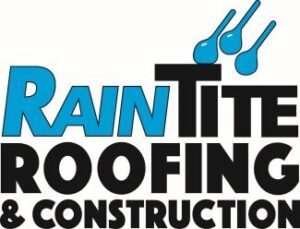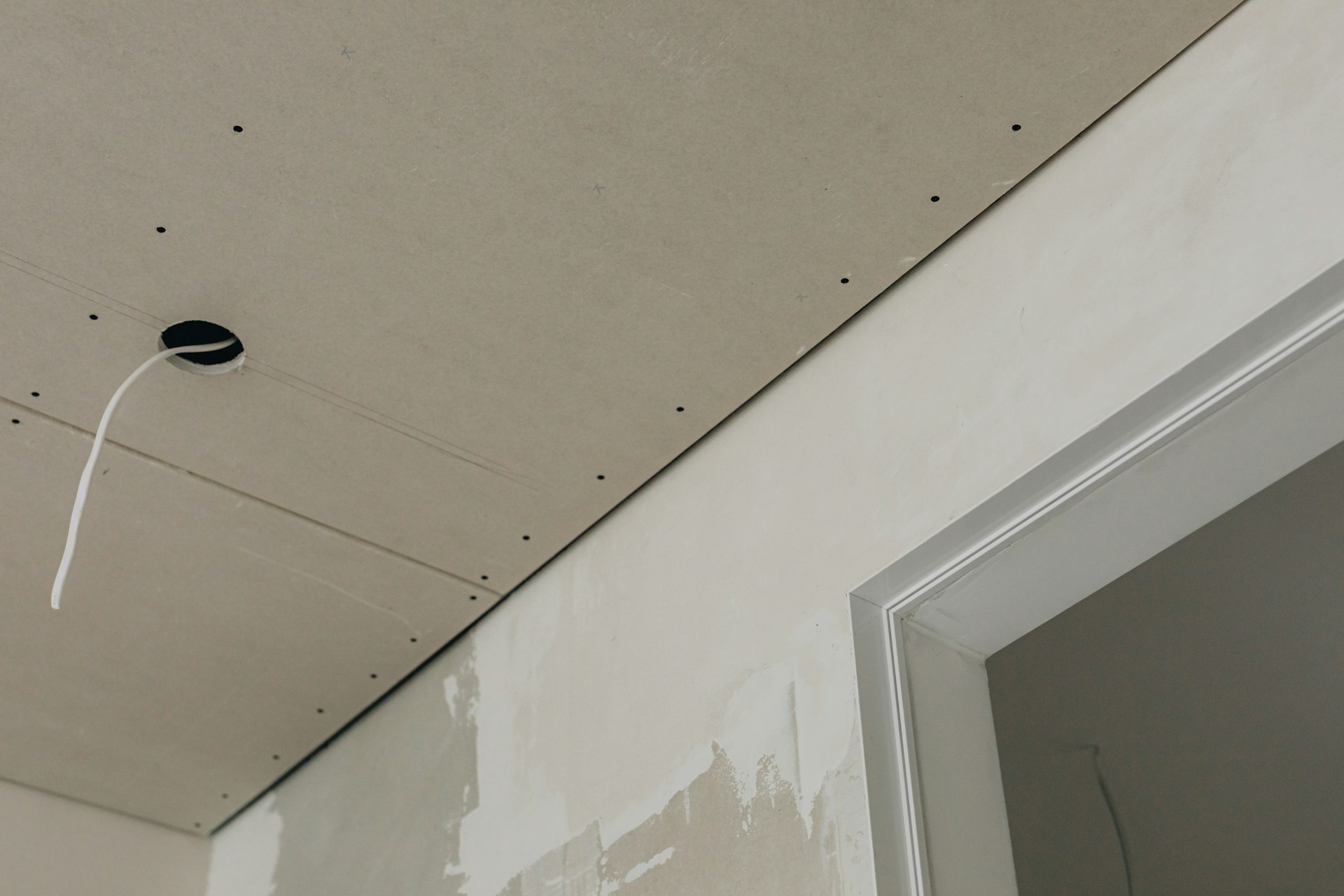Black spots on your ceiling might not seem like a big deal at first, but they can point to larger problems up above. These marks usually show up in corners or around light fixtures and vents, and they don’t just pop up from nowhere. The root of the problem often lies in your roof. If that’s the case, those spots might be giving you a warning that something’s leaking or letting in moisture. In Rapid City, where weather can shift quickly, even small roof damage can let just enough water in to cause these signs indoors.
Understanding why these black spots appear and where they’re coming from helps you protect your roof and your home before things get worse. If left alone, what started off as just one small dark patch can lead to mold, mildew, and even bigger and more expensive repairs. Getting ahead of the issue comes down to catching the signs early and knowing what typically causes them.
Identifying The Causes Of Black Spots
When black spots start showing up on your ceiling, one of the most common causes is a roof leak. Even a tiny puncture or loose flashing can let moisture in, and that’s where trouble begins. Water from a damaged section of roof can travel down through insulation and drywall, then settle on your ceiling, leaving behind those unwanted stains.
As that moisture sits, it creates the perfect environment for mold and mildew to grow. These black spots aren’t just surface-level. They’ve likely soaked into the material below. If you see yellowing or bubbling paint along with the spots, it’s almost always a sign that water is getting in from above.
While roof leaks are often the source, they aren’t the only problem. Other causes include:
- Poor attic ventilation, which traps humidity and causes condensation to collect in ceilings
- Inadequate insulation, which allows warm, moist air from inside your home to rise and hit cold surfaces
- Gaps or cracks near vents, skylights, or chimneys, where outside air and moisture can enter
Each one of these issues leads back to the same result: excess moisture in places where it shouldn’t be. Since Rapid City winters and falls can bring heavy moisture and sharp freezes, these problems often show up around late autumn, just like early November. That’s why understanding these causes now is especially smart.
Health Risks And Structural Damage
Aside from being unpleasant to look at, black spots from a leaky roof can pose health risks over time. Mold is more than just ugly. It can release tiny particles into the air that you and your family end up breathing in. This can lead to things like coughing, headaches, and stronger reactions for people with asthma or allergies.
But it’s not only about health. That same moisture that allows mold to grow also weakens building materials. Over time, wet insulation sags, wood framing softens, and drywall starts to crumble. Electrical wiring in your ceiling could even be affected if the water exposure is bad enough.
Ignoring that one patch on the ceiling might seem okay for a while. But weeks or months of hidden water damage can add up fast and lead to real trouble. If parts of your roof or ceiling structure get too weak, you’re looking at a lot more than a repair. You might end up needing a full rebuild in some areas. The good news is that all of this can usually be avoided with prompt action once those early signs show up. Knowing what’s at stake helps you make better, faster decisions when you first notice something’s not right.
Importance Of Professional Roof Leak Repairs
When black spots appear on your ceiling, it’s not the kind of problem you can ignore for long. Small leaks become big headaches quickly, and the best way to deal with roof leaks is with professional help. A trained roofer knows exactly what to look for, even in places you can’t see. They don’t just cover up the water stains. They figure out where the water is getting in and stop the problem at its source.
If you’re dealing with moldy ceiling spots in Rapid City, you’re likely also dealing with harsh weather that makes roof problems worse. Rapid changes in temperatures and conditions like freeze-thaw cycles going into late fall can break down weak parts of your roof faster. Professional roofers know how to work around weather patterns and time repairs so they last.
It helps when the team is familiar with the common roofing structures and materials used in Rapid City. They have experience fixing flashing issues, nail pops, and damaged valleys that are often missed by the untrained eye. Since leak sources aren’t always directly above the ceiling stains, finding the right repair takes both inspection and experience.
To choose the right roofer in Rapid City, keep a few things in mind:
- Look for a roofer who specializes in leak detection and repair
- Choose someone who offers a full inspection, not just a guess
- See if they’re familiar with local weather patterns and roofing types
- Make sure they’re licensed, insured, and provide clear timelines
Working with professionals who know what they’re doing means less hassle and better long-term results. It might cost more upfront, but it saves you from chasing water damage around your ceiling season after season.
Preventive Measures And Maintenance
Once a leak is fixed and the ceiling stains are dealt with, preventing future damage becomes the top priority. Regular roof care gives you a better chance of keeping your home dry and your ceilings clean. You don’t have to do a lot. Just a few good habits and checks can make a big difference throughout the year.
Start by scheduling seasonal inspections. In Rapid City, end-of-winter and late-autumn are key times to inspect roofs. Snowmelt, ice dams, and cold weather can all create damage that might go unnoticed until moisture shows up on your ceiling. Let a professional get up there, walk across the roof, and check common trouble spots like vents, pipes, and flashing.
Improving ventilation and insulation also helps prevent problems. Poor airflow lets heat and moisture build up in the attic. When warm indoor air hits the cool roof surface during Rapid City’s colder months, it creates condensation. That moisture collects in your ceiling and increases the risk of mold and wood rot. Make sure your attic space has proper airflow and that insulation isn’t blocking soffit vents.
Some other ways to help protect your ceilings include:
- Removing debris from your roof and gutters after storms or heavy winds
- Watching for signs inside your home, like musty smells or peeling paint, that point to moisture
- Fixing leaky pipes or HVAC lines in the attic before they cause bigger issues
- Replacing damaged shingles or panels before they fail completely
A little time spent on prevention can go a long way. Being ahead of the game helps you avoid damage, reduce stress, and stretch your roof’s lifespan.
Stop Problems Before They Get Worse
When you see black spots on the ceiling, don’t brush them off. They almost always mean there’s a deeper moisture issue hiding behind the surface. Whether it’s due to a roof leak, poor insulation, or weak ventilation, acting quickly makes a major difference. The longer you wait, the more damage builds up—and not just to the ceiling, but to your roof, framing, and even your indoor air quality.
Getting a professional to inspect your roof and fix the leaks is the smartest step you can take. You’re not just covering up stains. You’re stopping damage at the source. Keeping your roof in good shape isn’t only about looks. It’s what keeps your home safe and dry in every Rapid City season.
By taking care of small problems before they grow, black ceiling spots can stay a thing of the past. For help finding the leak fast and fixing things right the first time, reach out to RainTite Roofing & Construction. We offer expert roof leakage repair services in Rapid City and are ready to help you stay dry year-round.
Keep your home safe and sound by addressing leaks sooner rather than later. For reliable insights and assistance, consider scheduling professional roof leakage repair services. At RainTite Roofing & Construction, we’re dedicated to ensuring your roof stays in top condition, offering peace of mind in every season. Whether it’s spotting problem areas or delivering efficient fixes, trust our team to get the job done right.

